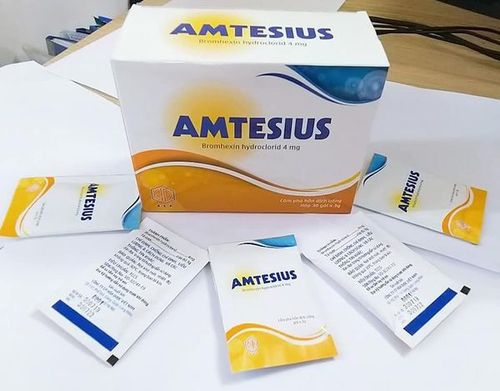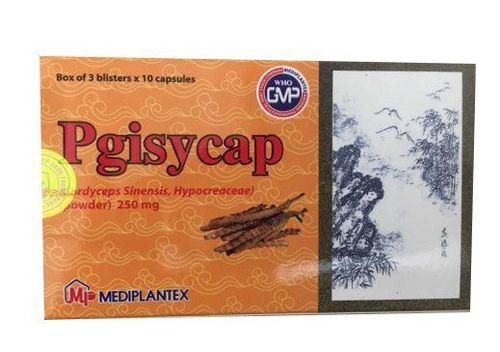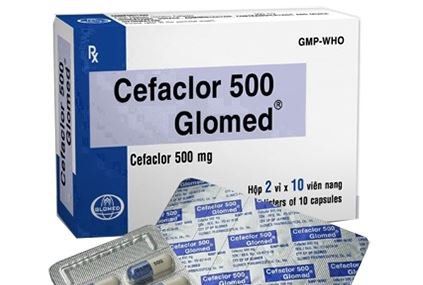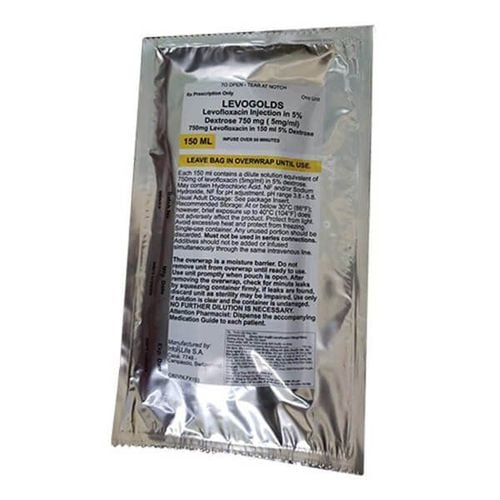This is an automatically translated article.
Article by Master, Doctor Nguyen Ngoc Phu - Department of Intensive Care - Vinmec Times City International Hospital
Bronchiectasis in the pre-antibiotic era was a common disease and often resulted in disability and death. But today, bronchiectasis has become a relatively rare disease in the developed world over the past 30 years. Bronchiectasis occurs at any age, the disease usually arises in adolescence and is more common in men than women.
1. What is bronchiectasis?
When you breathe, air is brought into the lungs through the airways (bronchial tree). The bronchial tree divides into thousands of smaller airways that reach the alveoli called bronchioles. Your airways contain small glands that make small amounts of mucus. Mucus helps keep your airways moist and traps dust and germs that you breathe in. This mucus is carried away by tiny hairs, called cilia, that line your airways.
When you have bronchiectasis, your airways are dilated and inflamed with thick mucus (sputum). Your airways may not clear up properly on their own. This means mucus builds up and your airways can become infected. Pockets in the airways mean the mucus is trapped and potentially infected.
Sometimes, if the bacteria count, you get a chest infection or a flare-up of symptoms. It is important to recognize and treat a chest infection. If you don't get treatment, your airways can be further damaged. Changes in your airways cannot be reversed, but there are ways you and your doctor can treat and manage bronchiectasis.
2. What are the symptoms of bronchiectasis?
Symptoms of bronchiectasis vary from person to person. The symptoms you may experience are:
The most common symptom is a persistent cough, usually coughing up sputum, sometimes called phlegm. Different quantity. For people with more severe bronchiectasis, it can be quite a large amount, for example a full cup of eggs or more per day. Some people may have a dry cough with little or no phlegm. Frequent chest infections are also a common feature of bronchiectasis. Other symptoms of bronchiectasis you may have are:
Feeling very tired or having trouble concentrating Shortness of breath : Shortness of breath or feeling short of breath Sinus problems Uncontrolled cough, also known as a leak bladder Anxiety or depression Less common symptoms of bronchiectasis include:
Coughing up blood Heaviness in the chest

Giãn phế quản có thể gây ho ra máu
3. What causes bronchiectasis?
For up to half of people diagnosed with bronchiectasis, there is no clear underlying cause. This is called idiopathic bronchiectasis.
Some illnesses associated with bronchiectasis include:
History of severe lung infections: Pneumonia, whooping cough or tuberculosis (TB) Inflammatory bowel disease: Ulcerative colitis and Crohn's disease Immune system deficiencies Some type of arthritis: Rheumatoid arthritis Structural or functional abnormalities of the lungs: primary villi dyskinesia, asthma, COPD or sarcoidosis Other causes include:
Severe allergic reaction to Fungi: Aspergillus Gastroesophageal Reflux Respiratory tract obstruction caused by inhaling a small object such as a grain
4. How is bronchiectasis diagnosed?
Your doctor will ask a lot of questions about you, your medical history, and your symptoms. If your doctor suspects you may have bronchiectasis, you will be referred to a respiratory consultant.
You will have several exams, which may include:
Chest X-ray High-resolution computed tomography (CT). Test your sputum to see if there is any bacteria in it Blood tests: leukocytosis, bilan infection Pulmonary function test (measures respiratory function) In some cases, your doctor may Suggested bronchoscopy: Observe the lesion, aspirate mucus, clear your bronchi, obtain a specimen for bacteriological culture.
Sometimes you will have to have other tests, including genetic blood tests, to find out why you have bronchiectasis.
5. What is the outlook for someone with bronchiectasis?
Bronchiectasis is a long-term condition. With bronchiectasis, you can have repeated respiratory infections.
Treatments include airway clearance (clearing mucus from the lungs with breathing exercises and physical therapy) aimed at reducing the number and severity of these infections. Some people seem to be at risk for more severe or frequent infections. The bronchiectasis scoring system can help your doctor determine if you are at higher risk for the disease and may need more treatments.
Most people diagnosed with bronchiectasis have a normal life expectancy with treatment tailored to their needs. Some adults with bronchiectasis develop symptoms as children and live with bronchiectasis for many years.
Some people with very severe bronchiectasis may have a shorter life expectancy.

Giãn phế quản cần được thăm khám và điều trị theo phác đồ
6. What is the treatment for bronchiectasis?
Bronchodilator treatment is aimed at preventing further damage and infection in your lungs and reducing your symptoms.
Treatments to be given include:
Developing a personal care plan to help you manage your symptoms Airway clearing techniques (breathing exercises) to help clear your phlegm. Doing these things regularly will reduce the number of infections you get and keep you healthy Antibiotic treatment for flare-ups or respiratory infections Annual flu shot Treating conditions causing your bronchiectasis as problems with your immune system. Antibiotics:
If you have a chest infection or flare-up, you will be given a course of antibiotics, usually for 14 days.
It is important to take your antibiotics as directed. This includes completing the full course of antibiotics.
The antibiotics used may vary depending on the type of bacteria present in your sputum.
The choice of antibiotic will be guided by the type of bacteria you have had in the past or which antibiotic is best for you. If your sputum analysis shows new bacteria or bacteria that won't be treated with the antibiotic you started, your doctor may prescribe a different one.
People with bronchiectasis sometimes have different bacteria in their sputum that can be more difficult to clear, such as Pseudomonas aeruginosa and non-tuberculosis mycobacterium (NTM). If this is the case for you, your doctor will discuss treatment options, which may include inhaled antibiotics.
Sometimes you will be given an antibiotic injection into a vein in your arm. This can be done in the hospital
You may be given long-term antibiotics, either as tablets or inhaled through a nebulizer if you have 3 or more infections per year.
Clearing phlegm
Clearing phlegm from the lungs is very important and can reduce the number of infections you get and relieve your cough.
Respiratory physiotherapists
They will discuss ways you can clear phlegm from your lungs and find the right airway techniques for you.
Your physical therapist will recommend how often and how long to do them. They will usually recommend a routine when you are well and changes to make when you are unwell. Some physical therapy techniques work best when treated promptly with your medication.
Techniques include moving into positions so that gravity helps sputum get out of your airways and lungs. The physiotherapist may pat your chest to loosen the phlegm and help it start moving. Some people find it helpful to blow into a small device to clear their chest.
A physiotherapist can tell you about the cycle of breathing techniques to do every day at home.
What to do with dyspnea
Some people do not have shortness of breath at all, for others it is the main symptom. More shortness of breath could be a sign of a chest infection. Over time, you'll learn how much shortness of breath is normal for you. Feeling short of breath can be very scary - seek medical help if you are concerned about a change in your shortness of breath.
If you feel short of breath, pacing your activities can really help. Talk to your physical therapist about this.
It can be difficult, but exercise can also help relieve shortness of breath. Stronger muscles use oxygen more efficiently so your lungs have to work less when you're active.
Help to quit smoking
If you smoke, stopping is very important. The NHS offers a free smoking cessation service - your GP can refer you. Learn more about quitting smoking.

Người bệnh giãn phế quản nên bỏ thuốc lá
Get vaccinated
You should get a flu shot every year .
Pneumococcal vaccination: Repeat every 5 years.
Other treatments:
Surgery Today, bronchiectasis surgery is quite rare, as it only helps a few people. It is sometimes considered for people who have bronchiectasis in a limited area of one lung and have not responded to other treatments.
Bronchial artery embolism If you cough up blood, you may have a CT scan called a bronchial angiogram to see the blood vessels in your lungs. If this shows blood vessels causing bleeding, a procedure called embolization can block the blood vessels causing the problem.
Lung transplant Lung transplant is rarely needed in cases of bronchiectasis. It is for people with very severe lung disease and no other treatment options.
Give oxygen Your oxygen saturation level will be checked as part of your breath test. Most people with bronchiectasis do not need oxygen.
Vitamin D Supplements There is some evidence that people with bronchiectasis may not get enough vitamin D needed for healthy bones, teeth and muscles. Your health care professional can check vitamin D levels. Current government advice is for adults to get 10 micrograms of vitamin D daily.
Follow-up Checks Make sure you review your treatment with your healthcare professional at least once a year. You will give some sputum for analysis and see how often you have flare-ups.
If you have a need for consultation and examination at hospitals and clinics of Vinmec Health system nationwide, please contact the Website for the best service.
Please dial HOTLINE for more information or register for an appointment HERE. Download MyVinmec app to make appointments faster and to manage your bookings easily.













